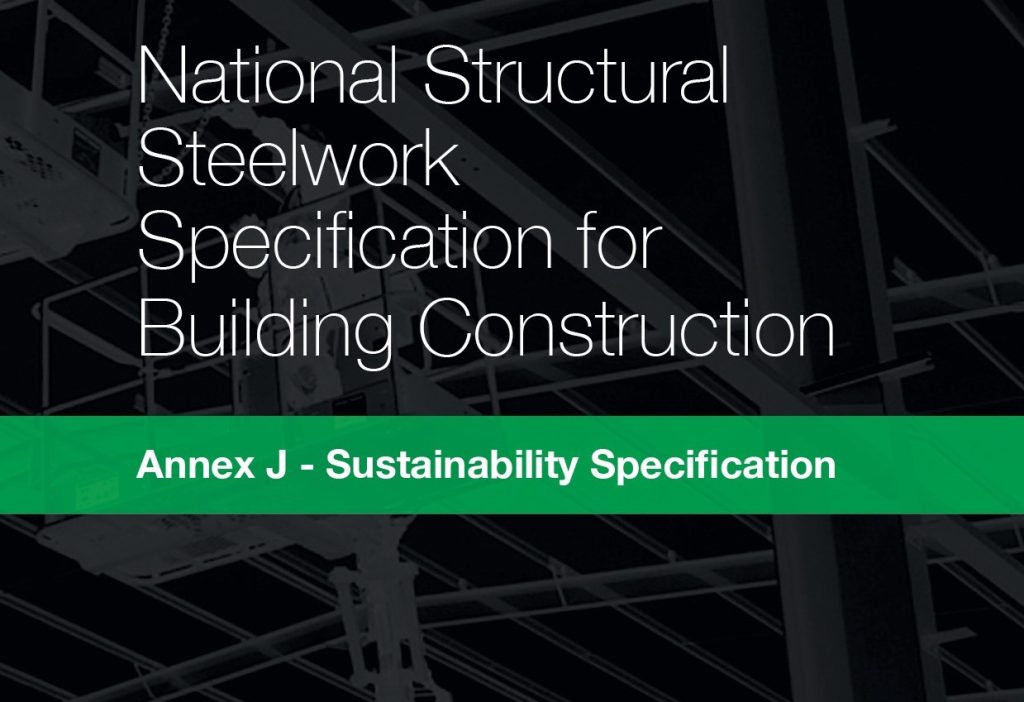New industry guidelines have been published setting out a ‘sustainability specification’ for the steelwork sector.
The British Constructional Steelwork Association (BCSA) has added the new section to the National Structural Steelwork Specification for Building Construction (NSSS).
The NSSS was developed to standardise approaches to designing and constructing steel frame buildings. It is regularly revised to keep up with industry developments.
Now the updated 8th edition of the NSSS includes a new section – Annex J: Sustainability Specification. This outlines the practices required for sustainability to be achieved in the construction of structural steel buildings.
The guidance has been developed by a steering committee of industry leaders and experts, including Elland Steel’s Chairman and BCSA President, Mark Denham.
What does it cover?
Annex J: Sustainability Specification covers all stages of structural steel usage in construction, including:
- Designing for sustainability – This section outlines practices for design to reduce material volumes, minimise fabrication and limit requirements for maintenance during service life. Since the greatest savings are achievable during design stage, this guidance is the most thorough, looking at the integration of life-cycle assessments, usage of materials, and designing for adaptability and deconstruction.
- Fabricating steel sustainably – Guidance is given here on how sustainable fabrication techniques can be ensured. This includes steelwork contractors requiring information on reclaimed products, fire design details and any workshop waste targets and providing information on embodied carbon and environmental management systems.
- Using new steel sustainably – For new steel, the requirements outlined are how information on its traceability, labelling and marking and Environmental Product Declarations (EPDs) should be submitted to facilitate reuse in the future.
- Reclaiming and reusing structural steel – For reclaimed steel, the document outlines the requirements around inspection, protective treatment removal and overcoating, to ensure its safety in future usage. It also makes clear the fabrication restrictions to be aware of for reclaimed steel.
- Applying protective treatments – Guidance is given on the essential practices to follow for protective treatment systems, including identifying and flagging untreated steelwork and meeting wider NSSS requirements regarding hot-dip galvanising and paint and intumescent systems.
- Ensuring quality management – Finally, Annex J reiterates requirements for steelwork contractors to demonstrate competence and environmental management systems, such as through membership of the BCSA Steel Construction Sustainability Charter.
As well as covering these principles of sustainable steelwork building construction, the document looks at requirements for supply chain members and procurement practices. It advises on how factors including early appointment and engagement of key contractors and site design for use of energy efficient plant during works, will contribute to embedding sustainability targets and values.
Additionally, while the focus of the guidance is on environmental sustainability, it also reminds professionals to consider the societal and financial sustainability of their decision-making. This is particularly vital around maintaining the safety and integrity of structures while refining design features or material usage.
Adding to the BCSA’s already comprehensive suite of guidance documents for structural steel contractors, this latest revision to NSSS is an accessible, practical tool for professionals.
Contributing to government heating feasibility study
BCSA members are now contributing to a government study looking into the feasibility, costs and benefits of using 100% hydrogen for heat in industrial sites.
Led by the Department for Business, Energy and Industrial Strategy, this is reviewing how to decarbonise the gas grid by replacing natural gas heating with a realistic alternative.
Members’ insights will further contribute to achieving net zero targets by improving the environmental outcomes from vital but energy-intensive ‘heavy’ production methods.
For more of the latest industry insights and updates, sign up to our newsletter.

